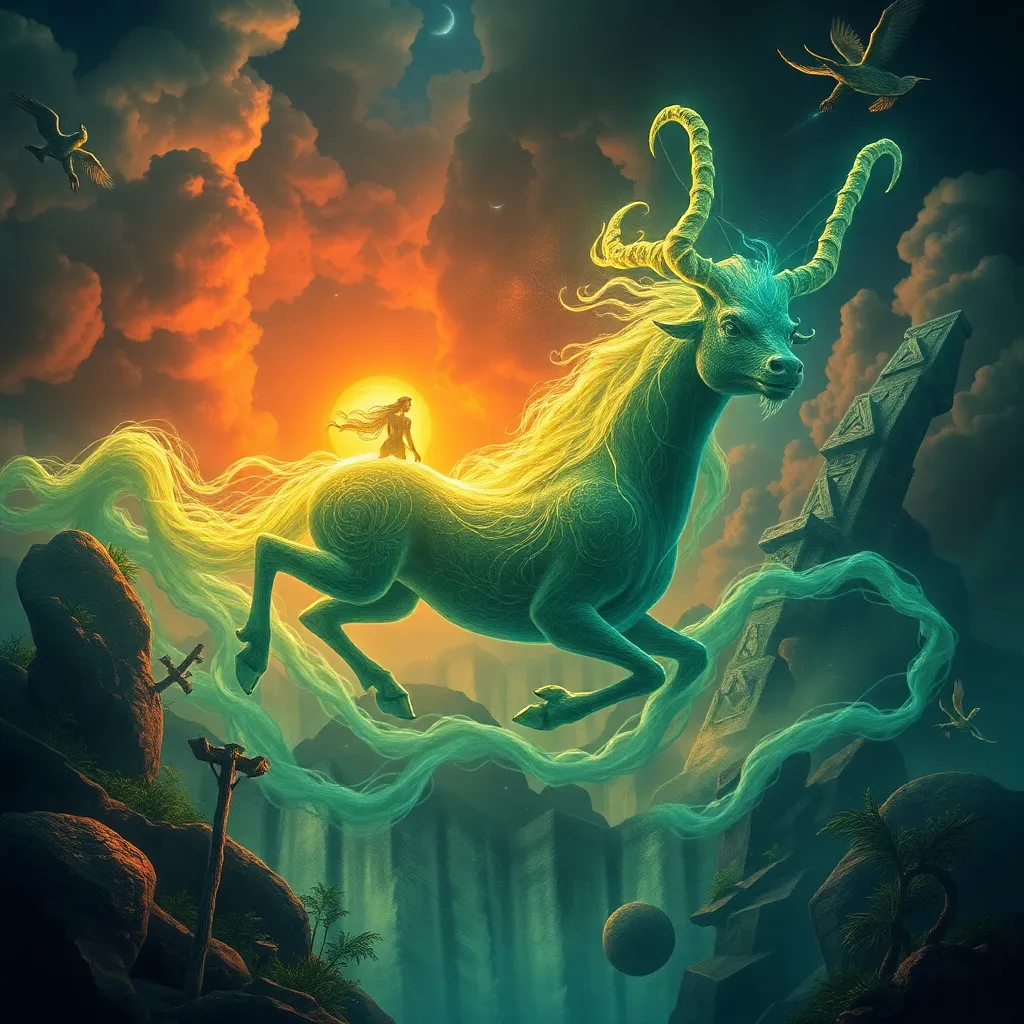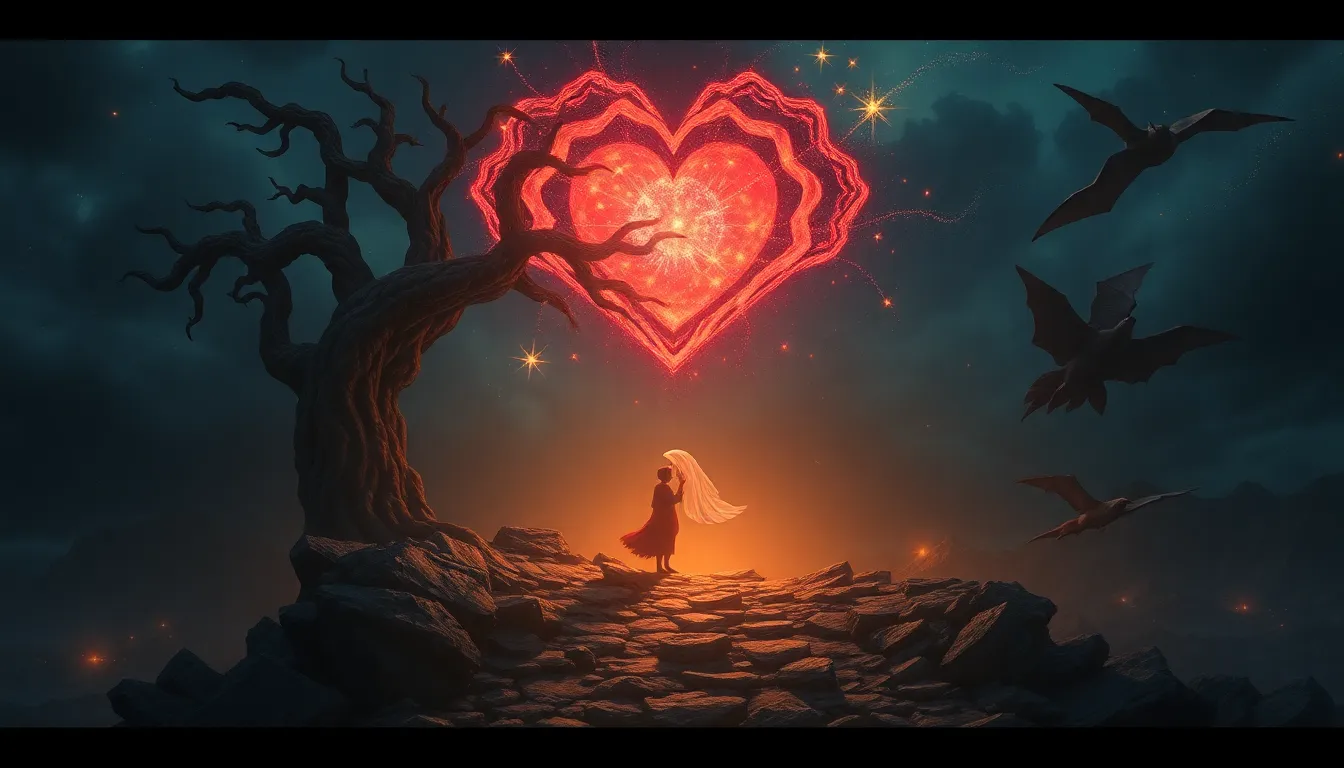The Great Flood and Other End of the World Legends
I. Introduction
Legends of the end of the world are narratives that encapsulate humanity’s fears, hopes, and moral lessons regarding the fate of our existence. These stories often reflect cultural anxieties and serve as cautionary tales about the consequences of human behavior. The importance of studying these myths lies in their ability to reveal underlying societal values and historical contexts that have shaped civilizations throughout time.
Among these legends, the Great Flood narrative stands out as a central theme that resonates across various cultures. This article will explore the universal aspects of the Great Flood, the role of natural disasters in shaping such legends, and the broader implications of end-of-the-world myths in art, literature, and modern society.
II. The Great Flood: A Universal Narrative
The Great Flood is a narrative found in many cultures, each version carrying its unique nuances yet sharing common threads. Here are some of the most notable accounts:
- The Biblical account of Noah: In the Book of Genesis, God decides to flood the earth due to humanity’s wickedness, sparing only Noah, his family, and pairs of each animal species aboard the Ark.
- The Epic of Gilgamesh: This ancient Mesopotamian text features a character named Utnapishtim, who is warned by the god Ea to build a boat to survive a catastrophic flood sent by the gods.
- Hindu accounts: In Hindu mythology, the Matsya Purana tells of a great fish that saves the sage Manu from a flood, paralleling the themes of salvation and divine intervention.
- Native American versions: Various tribes, such as the Ojibwe, have flood myths that often involve a great being who cleanses the earth of its corruption.
Despite their differences, these stories share several common elements:
- Divine wrath and moral failings: Many legends emphasize the consequences of humanity’s moral failings, prompting divine retribution.
- Rescue of a chosen individual or group: Central figures are often chosen to survive and repopulate the earth, representing hope and renewal.
- Rebirth and renewal post-flood: The aftermath of the flood signifies a fresh start for humanity, emphasizing themes of rebirth.
III. The Role of Natural Disasters in Shaping Legends
Natural disasters, particularly floods, have historically left profound impacts on societies. When catastrophic events occur, they often lead to significant societal changes and adaptations. The psychological factors behind apocalyptic narratives can be traced to humanity’s need to explain and cope with the unknown. Thus, natural disasters inspire myth-making as cultures seek to make sense of their suffering and find meaning in chaos.
IV. Other Prominent End of the World Legends
Beyond the Great Flood, many other end-of-the-world legends have emerged throughout history:
A. The Apocalypse in Christianity
The Book of Revelation outlines a series of events leading to the end of the world, including the rise of the Antichrist, the final battle of Armageddon, and the establishment of a new heaven and earth. This narrative has profoundly influenced Christian thought and culture.
B. Norse mythology: Ragnarok
In Norse mythology, Ragnarok is a series of events, including a great battle that results in the death of major deities, natural disasters, and the submersion of the world in water. Key figures include Odin and Thor, and the aftermath symbolizes renewal and a new world emerging from the ashes.
C. Hindu concepts of destruction and renewal (Pralaya)
In Hindu cosmology, Pralaya is the cycle of destruction and rebirth that occurs at the end of each cosmic cycle, leading to the re-creation of the universe. This concept emphasizes the cyclical nature of time and existence.
V. Cultural Variations and Adaptations
Flood myths and end-of-the-world narratives vary widely across cultures, yet the core themes often remain consistent. These legends are adapted to reflect the values, fears, and historical contexts of the societies that tell them. In modern times, retellings of these myths can be found in literature, film, and other media, often reinterpreting the original stories to address contemporary issues.
VI. The Psychological Appeal of End of the World Myths
The allure of end-of-the-world myths can be attributed to several psychological factors:
- Fear of the unknown: These narratives address existential fears and the anxiety surrounding death and the future.
- Hope for renewal: They provide a sense of hope for a new beginning after destruction, allowing individuals to envision a better future.
- The role of prophecy: Such myths often include prophetic elements that shape societal behavior and encourage moral reflection.
VII. The Influence of End of the World Legends on Art and Literature
The themes of the Great Flood and other apocalyptic scenarios have significantly influenced art and literature throughout history. Artists have depicted floods and apocalyptic moments in various forms, from classical paintings to modern graphics. Notable literary works inspired by these legends include:
- “The Grapes of Wrath” by John Steinbeck: This novel explores themes of survival and resilience amidst disaster.
- “The Road” by Cormac McCarthy: A poignant tale that delves into the human condition in a post-apocalyptic world.
- Films: Movies like “2012” and “Noah” visualize the cataclysmic themes central to these legends, often emphasizing human endurance and morality.
VIII. Modern-Day Relevance of End of the World Legends
In today’s world, the relevance of end-of-the-world legends has been amplified by issues like climate change, natural disasters, and societal upheaval. Many see parallels between the themes in these myths and contemporary existential threats. This resurgence of apocalyptic thinking reflects humanity’s ongoing struggle with the unknown and the desire for redemption.
As society confronts pressing issues, the narratives of destruction and renewal remind us of our resilience and the possibility of rebirth, urging us to reflect on our behaviors and values.
IX. Comparative Analysis of End of the World Legends
In comparing these legends, we note that while the details may differ, the underlying messages often converge. They serve as cautionary tales that warn of moral failings and the potential consequences of human actions. The universal appeal of these stories underscores a shared human experience, reminding us of our collective fears and hopes in the face of uncertainty.
In conclusion, the Great Flood and other end-of-the-world legends continue to resonate across cultures and time, reflecting humanity’s deepest anxieties and aspirations. Through these narratives, we can gain insight into our cultural histories and the values that shape our societies today.




